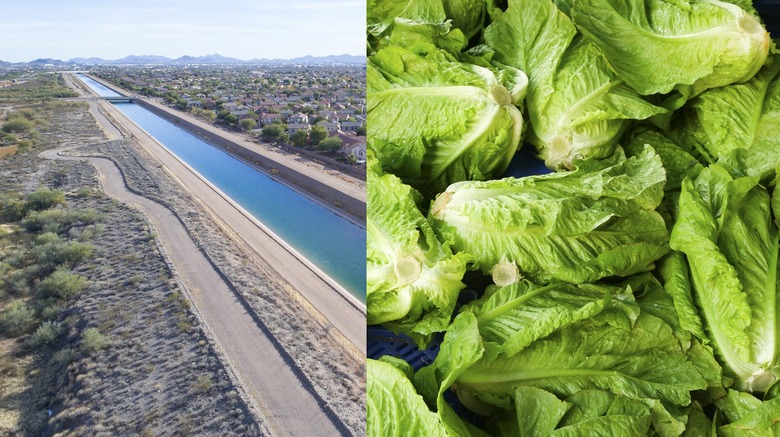Romaine Lettuce E. Coli Outbreak Linked To Contaminated Canal Water
Consumers are finally getting a bit of good news about romaine lettuce — the Centers for Disease Control and Prevention released what they claim is the final update on the recent E. coli outbreak linked to romaine. The outbreak "appears to be over," the CDC says, and may have been caused by canal water contaminated with food poisoning bacteria.
The outbreak, which began early this spring, caused a total of 210 infections in 36 states, resulting in five deaths and 96 hospitalizations. Of those who endured hospitalizations, 27 developed a type of kidney failure called hemolytic uremic syndrome.
In April, the outbreak was traced back to lettuce grown in the Yuma region of Arizona, later resulting in a halt in production of all lettuce from the region. Until now, the CDC and the Food and Drug Administration had been unable to determine the specific source of contamination. In the latest updates, both released on June 28, the CDC and the FDA say that the outbreak may have been caused by E. coli-infected canal water.
"CDC laboratory testing identified the outbreak strain of E. coli O157:H7 in canal water samples taken from the Yuma growing region," the CDC said in the update. "FDA is continuing to investigate the outbreak to learn more about how the E. coli bacteria could have entered the water and ways this water could have contaminated romaine lettuce."
The FDA says their analysis "is still ongoing" and that they "have identified additional strains of Shiga-toxin producing E. coli in water and soil samples, but at this time, the samples from the canal water are the only matches to the outbreak strain."
Despite the confusion surrounding the source of the bacteria, consumers can shop safely. The FDA assures consumers that E. coli should no longer be present in romaine lettuce. The agency received confirmation of the final harvest of romaine from the Yuma region on May 2, and the vegetable has a 21-day shelf life. Since more than 21 days have passed, all romaine lettuce on the shelves currently should be safe.
Even though the outbreak may be over, the spate of illnesses has inspired further action to prevent outbreaks in the future. Many hope that new policies could be put in place to catch the source of an outbreak sooner, or even before illness occurs.
Consumer Reports' food safety director Dr. James E. Rogers told The Daily Meal, "The industry is aware this is a huge issue and that they need to do something about it. One would hope that the FDA would at some point require trace-back laws."
Trace-back laws would require distributors of contaminated produce to conduct investigations to determine the source of harmful bacteria.
"Major produce manufacturers have voluntary trace-back," Rogers said over the phone. "Smaller producers may not do that."
In the future, hopefully the process of identifying the source of contamination would occur more quickly.
However, consumers can take steps on their own at home to prevent illness. "Consumers should always practice safe food handling and preparation measures," the FDA said. Here are some simple tips to follow so you can prevent food poisoning.
